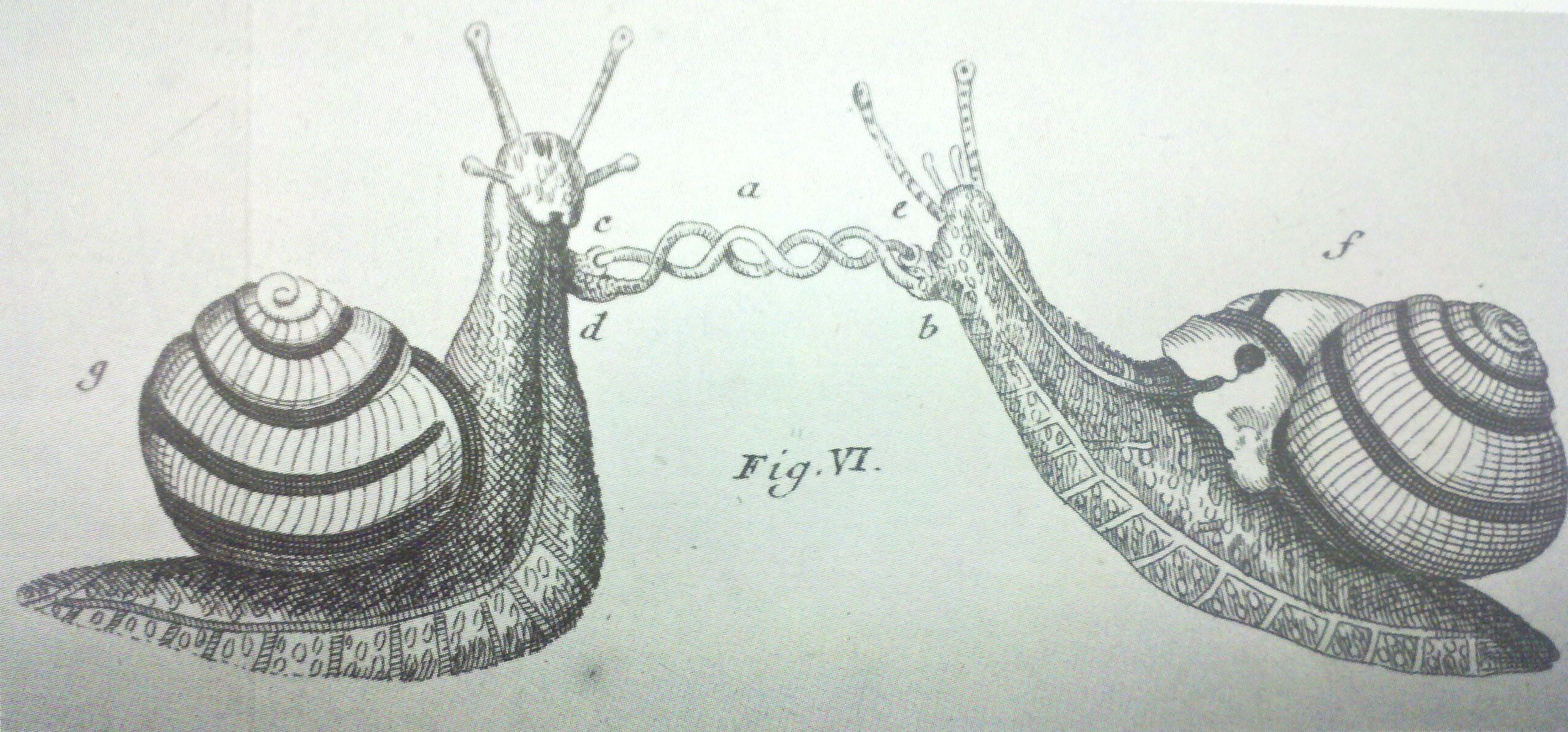Reproduction
There are two types of reproduction that any organism can perform: sexual or asexual. Most often, land snails reproduce by sexual reproduction (Carnegie Museum of Natural History, 2011). However, snails are monecious (hermaphroditic), meaning they house male reproductive organs and female reproductive organs (Williams, 2009). Oliver Goldsmith's History of the Earth and Animated Nature (1810) describes it simply: "Every [land] snail is at once male and female; and while it impregnates another, is itself impregnated in turn" (Williams, 2009).

Figure 1. Snail reproduction in which the penises of both organisms enter the other and intertwine in this species of land snail called Biblia naturae (Williams, 2009).
Patterns of reproduction have been said to be dependent on weather conditions. Snail species are more likely to reproduce in warm and humid conditions than cold and dry (Carnegie Museum of Natural History, 2011).
Snails tend to also have many partners over the course of the reproductive season (Williams, 2009). A selection process occurs in which one sperm from one snail is favored over another (Williams, 2009). If high populations in a particular niche exist, competition between snail organisms can be present (Williams, 2009).
With the help of a developed sensory system, snails are able to receive chemical signals through touch sensors on their head and foot (Carnegie Museum of Natural History, 2011). When two snails are in close proximity, they are able to detect and follow the other's slime trail (Carnegie Museum of Natural History, 2011). Upon making contact with one another, snails line up head to head with their tentacles and mouths touching (Williams, 2009). After a few rhythmatic shifts of the head, they exchange genitalia through the atrium (common opening for penis and vagina) (Carnegie Museum of Natural History, 2011). The genetic material is then combined in the fertilization chamber and the eggs begin to form (Carnegie Museum of Natural History, 2011).
Shortly after fertilization, the eggs are coated with albumen (jelly-like covering) while it is passed down the sperm oviduct (Carnegie Museum of Natural History, 2011). The albumen is important because it provides protection and nutrients for the fertilized egg. It is then passed out of the parent snail body in a damp area of the snail's habitat (Carnegie Museum of Natural History, 2011). Snails can lay up to forty eggs, but sometimes only lay two, and the eggs hatch within about thirty to forty-five days after fertilization (Carnegie Museum of Natural History, 2011).
View References
View Photo Gallery
Go to the About the Author page
Go Home